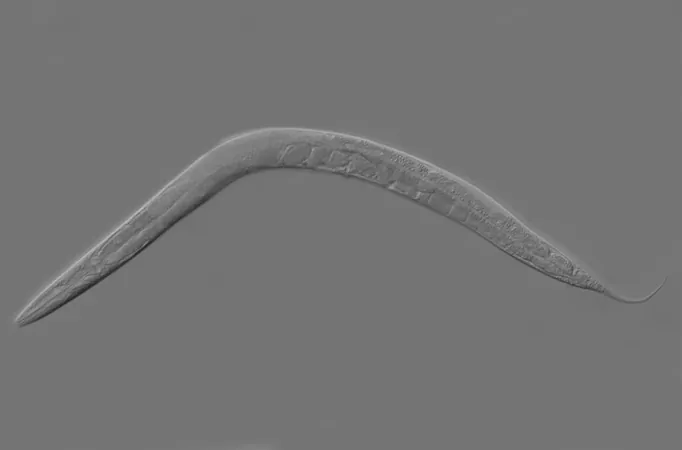
Breakthrough in Breast Cancer Research: New Genetic Model Offers Hope
2024-11-09
Author: Sarah
Breakthrough in Breast Cancer Research: New Genetic Model Offers Hope
A groundbreaking study from a Michigan State University research team unveils a promising new model for understanding breast cancer, which may provide crucial insights into metastasis—the spread of cancer from its original site to other parts of the body. This innovative model could revolutionize how scientists approach the complexities of cancer development.
Research Overview
At the heart of this research is Professor Andrechek from the MSU Department of Physiology, who has been delving into the lesser-known E2F5 gene and its significant role in breast cancer progression. His findings indicate that the absence of E2F5 leads to abnormal regulation of Cyclin D1, a protein intricately linked to the formation of metastatic breast tumors after a prolonged period. More worryingly, the study demonstrates that when E2F5 is removed from the mammary gland, tumors can readily form.
New Model Insights
"This new model allows us to study metastasis in a way that hasn’t been accurately represented before," said Andrechek. "Most traditionally engineered mouse models show metastasis primarily to the lungs, which doesn’t align with human breast cancer behavior. Our model is more representative of actual human disease, targeting sites like lymph nodes, bones, and liver."
Implications for Future Research
The research, recently published in the esteemed journal *Oncogene*, holds significant implications for the future of breast cancer treatment. With a balance of bioinformatics and genetic modeling, Andrechek's lab is focusing on the intricacies of mammary tumor development through a multifaceted approach, including computational analysis alongside animal studies.
Notable Achievements
In a notable highlight of this research, lead graduate student Jesus Garcia Lerena received the prestigious Susan G. Komen ASPIRE fellowship, which supports underrepresented communities in cancer research. Lerena joined the team in 2022 and has since been instrumental in uncovering the complexities of breast cancer metastasis.
Gene Regulation and Cancer Progression
The lab's ongoing mission is to identify which specific genes regulated by E2F5 are responsible for driving cancer progression. While E2F5 itself may not lead directly to these effects, it likely influences a range of other genes that play critical roles in cancer development. As an example, Andrechek noted, “We're dealing with hundreds of genes, and our goal is to pinpoint which are the key players.”
Mouse Models and Human Relevance
Furthermore, the mouse models employed in the study mirror human cancer mutations closely, with tumors taking roughly two years to develop—an analogous timeframe to breast cancer in older women. This age relevance underscores the viability of the model in translating findings to human treatment strategies.
Understanding Breast Cancer Subtypes
It’s crucial to highlight that breast cancer is not a monolithic disease. There are various subtypes, determined by factors such as hormone receptor status and genetic variations. As research progresses and more genetic programs are understood, the potential for tailored therapies increases, which could lead to more effective treatments with fewer side effects compared to traditional chemotherapy approaches. Andrechek emphasizes, “Understanding the underlying genetics systems opens up avenues for innovations in targeted therapies, a future where treatment is more personalized and less toxic to patients.”
Conclusion
In summary, this progressive research could not only illuminate the pathophysiology of breast cancer metastasis but also guide the development of more sophisticated, patient-focused interventions, bringing renewed hope to millions affected by this pervasive disease. Stay tuned as this field evolves, and remember—the journey towards effective cancer therapies has just begun!





 Brasil (PT)
Brasil (PT)
 Canada (EN)
Canada (EN)
 Chile (ES)
Chile (ES)
 España (ES)
España (ES)
 France (FR)
France (FR)
 Hong Kong (EN)
Hong Kong (EN)
 Italia (IT)
Italia (IT)
 日本 (JA)
日本 (JA)
 Magyarország (HU)
Magyarország (HU)
 Norge (NO)
Norge (NO)
 Polska (PL)
Polska (PL)
 Schweiz (DE)
Schweiz (DE)
 Singapore (EN)
Singapore (EN)
 Sverige (SV)
Sverige (SV)
 Suomi (FI)
Suomi (FI)
 Türkiye (TR)
Türkiye (TR)